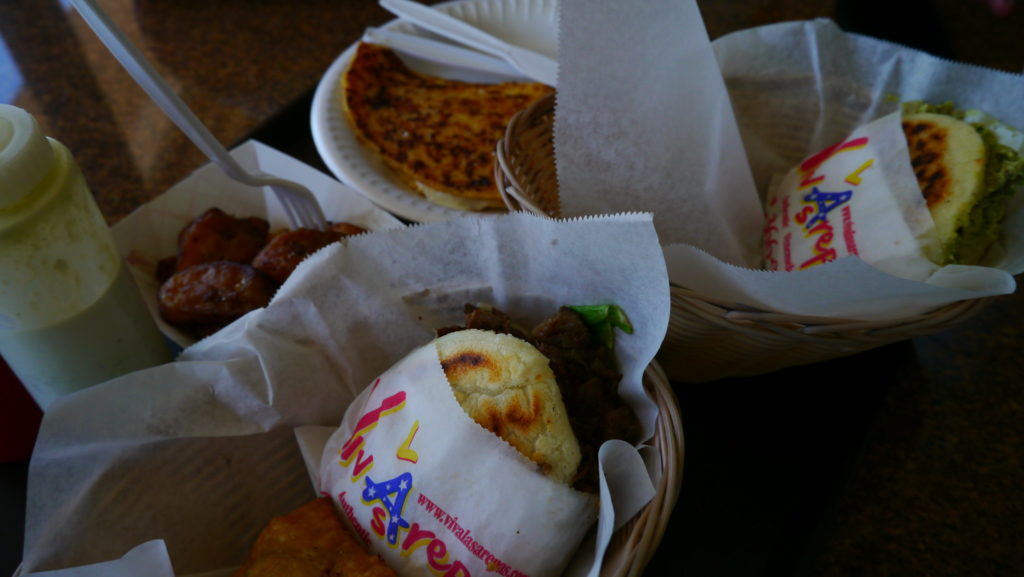
I’m extremely excited to share this article about Venezuelan foods with you since food is one of my greatest pleasures when traveling. I like to think that we get to know other people’s culture and country through their food. In the case of Venezuela, its cuisine has influences from European (mostly from Spain, France, Italy, and Portugal), West African and Native American traditions. So from their food, we can see how heterogeneous they are.
Before I get started, a little word of warning for those who are vegetarian and are planning to go to Venezuela: most meals have meat. However, it’s still possible to find meals for your needs despite the fact that you’ll have to seek and ask a little bit more.
Here we go!
Food
Arepa:
There is nothing on Earth more Venezuelan than an Arepa, which is a flat and round patty made with cooked corn flour that can be baked, grilled or fried. Above all, this is the most representative meal of Venezuela and also a very versatile one. As there are many different ways to fill up your arepa, I could even say that your imagination is the limit: beans, any type of cheese, veggies, seafood, avocado, mushrooms, shredded or ground meat.
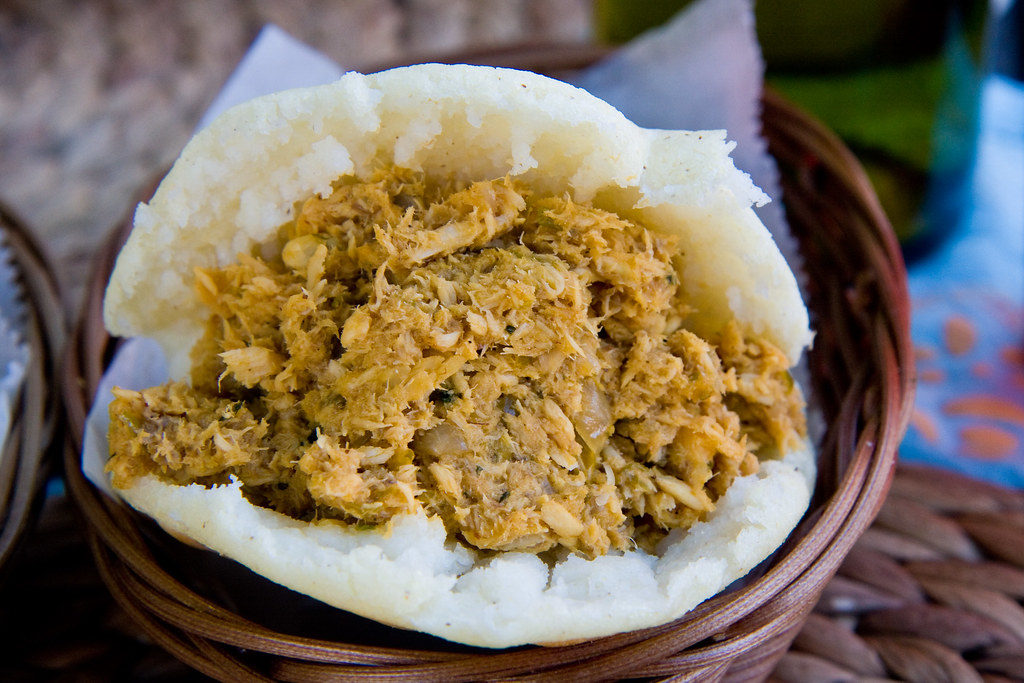
Pabellón Criollo:
This is the country’s national dish made of rice, stewed black beans, shredded meat and tajadas (fried slices of plantain). Don’t leave Venezuela without trying this dish.
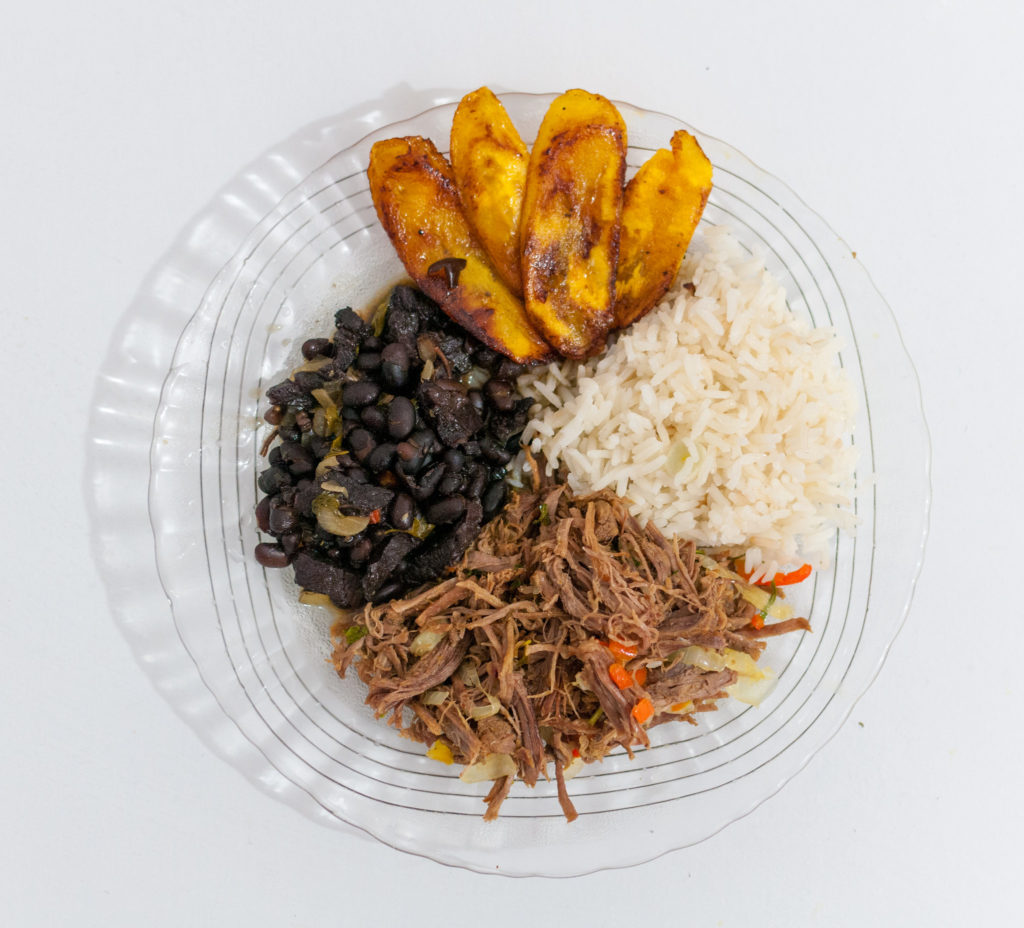
Cachitos:
The Venezuelan version of croissants but filled with ham and cheese. Of course, you can find them at any bakery, so no excuses for not trying them!

Empanadas:
They are a deep fried turnover pastry. The fillings are as diverse as those of arepas such as ground beef, shredded chicken, shredded meat, ham, and cheese. Specifically if you go to Margarita Island or Sucre state, the empanada de cazón (shark meat turnover pastry) is a must-eat! Empanadas are eaten as a snack at any moment of the day or as a main dish.
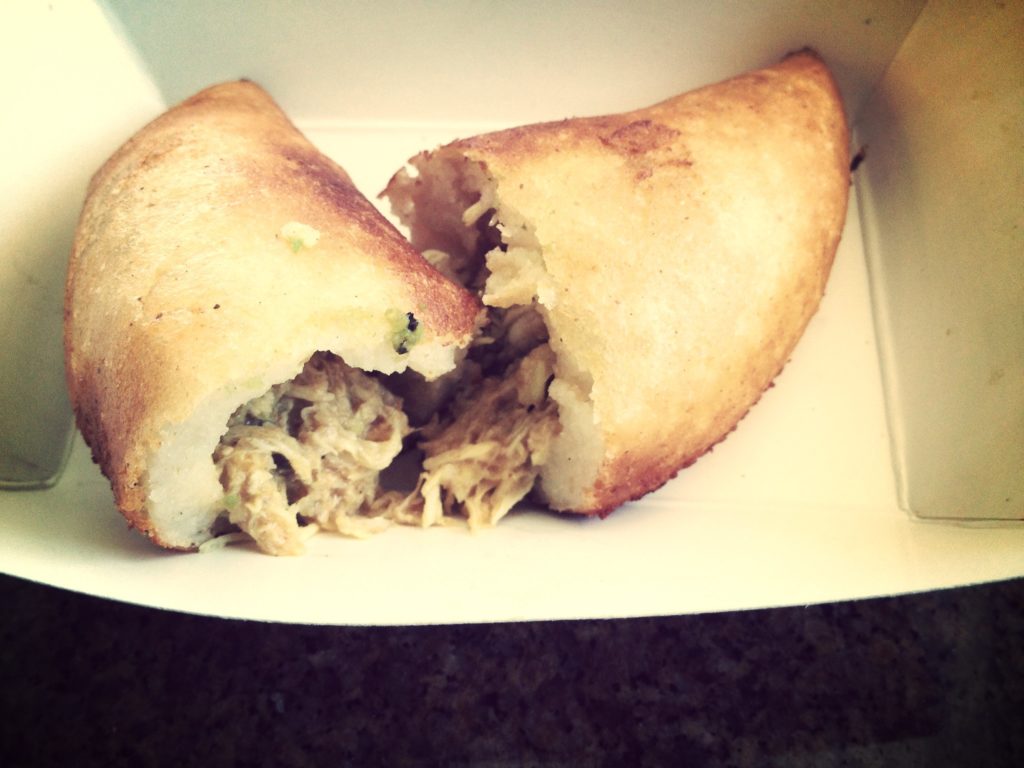
Hallaca:
It’s a corn dough wrapped with banana leaves and filled with a variety of ingredients such as meat, chicken, raisins, capers, olives, among others. In essence, we could say they are like tamales but with a special attention to the filling. Since the hallaca is the typical Venezuelan Christmas dish, it’s a must-eat if you come during November and December. However, in offseason, if you seek a little bit, there is still a chance that you can eat one.
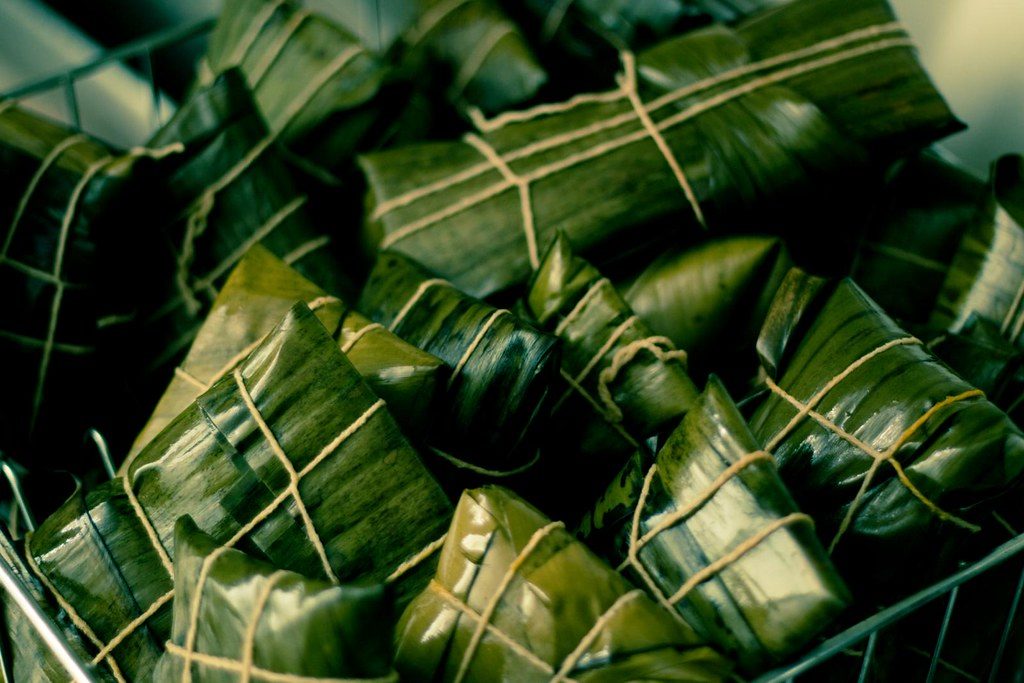
Cachapas:
They are like pancakes made with a lumpy corn batter. They are traditionally filled with queso de mano (soft white cheese that resembles mozzarella cheese) with some butter spread. But they can hold other fillings as ham and cheese or pork ring.

Pasticho:
This is the Venezuelan variant of Lasagna, but I would even dare to say that this has a more intense flavor due to the additional ingredients and different combinations they add.

Vuelve a la vida:
The translation would be “Come Back to Life”. If you head to the Venezuelan coast, you can’t miss this seafood cocktail that, according to locals, it has aphrodisiac benefits.

Desserts
Golfeados:
These sweet rolls are the Venezuelan version of cinnamon rolls or sticky buns filled with papelon (unrefined whole cane sugar) and melted grated cheese on the top since they are baked. As a result, they bring a delicious combination of salty and sweet flavors in every bite.

Quesillo:
Imagine that this is like the Venezuelan version of a crème caramel with a pudding texture. It’s simply delicious! Once you taste it, you’ll ask for more!
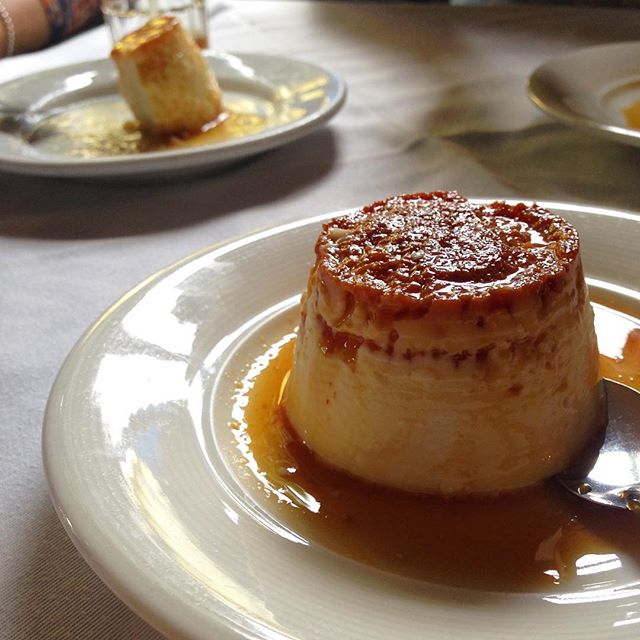
Arequipe:
It’s kind of difficult to explain the taste of this Venezuelan dessert since it’s rare to find it outside Latin American countries. However, dulce de leche is to Venezuelans what Nutella is for Americans.

You can get all of these desserts almost anywhere you go in Venezuela.
Beverages
Malta:
It’s a sweet carbonated and non-alcoholic beverage prepared with barley, hops, and water like beers. For locals, a malta always goes hand in hand with empanadas.

Cocada:
A refreshing and popular Venezuelan smoothie made of fresh coconut, milk, and ice.

Rum:
Venezuela is widely known for its rum, which has also been worldwide awarded, so why don’t you give it a try? Some popular name brands are Diplomático, Santa Teresa, and Cacique.

Papelón con limón:
A refreshing Venezuelan beverage made of papelon (unrefined sugar cane), water and lime or lemon juice.
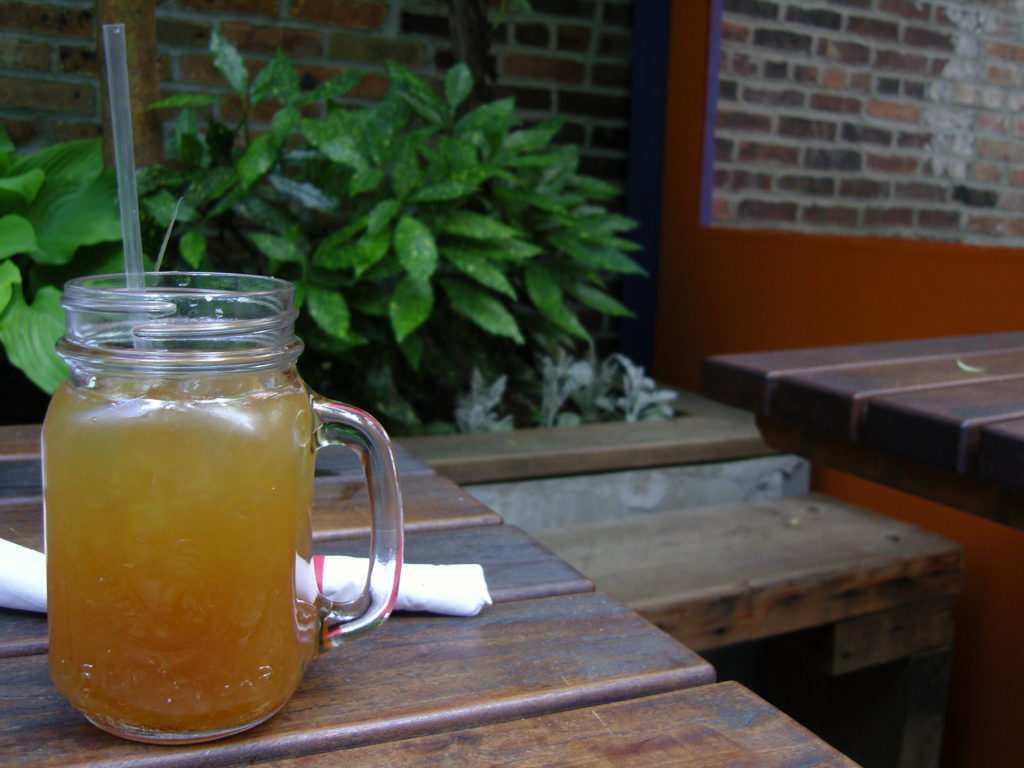
Well, this is it! I have to admit that there are many other gastronomic options, but with these foods, desserts, and beverages you can have a general feel of Venezuelan cuisine.
I‘m looking forward to reading your impressions and thoughts on Venezuelan gastronomy, either if you have already been to Venezuela or if you are planning to go there soon, so comment down below what you think of these dishes. Cheers!
If you loved this article or found it useful, don’t forget to share it with your adventurous and travel-hacking friends! If you want more posts like this, follow us on Youtube, Instagram, Pinterest, Twitter or Facebook and subscribe to our newsletter!


